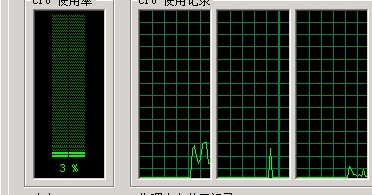标签:速度 迁移 局域网 derby 技术 || 应该 批量删除 知识
我们一直在追求架构的艺术!!
经过几分钟的排查,数据库情况如下:


至于聚集索引和非聚集索引等知识,请各位移步google或者百度。
至于业务,不是太复杂。经过相关人员咨询,大约40%的请求为单条Insert,大约60%的请求为按class_id 和in_time(倒序)分页获取数据。Select请求全部命中聚集索引,所以性能非常高。这也是聚集索引之所以这样设计的目的。
由于单表数据量已经超过21亿,并且2017年以前的数据几乎不影响业务,所以决定把2017年以前(不包括2017年)的数据迁移到新表,仅供以后特殊业务查询使用。经过查询大约有9亿数据量。
数据迁移工作包括三个个步骤:
这里申明一点,就算是传统的做法也需要分页获取源数据,因为你的内存一次性装载不下9亿条数据。
SELECT * FROM (
SELECT *,ROW_NUMBER() OVER(ORDER BY class_id,in_time) p FROM tablexx WHERE in_time <‘2017.1.1‘
) t WHERE t.p BETWEEN 1 AND 100如果你的数据量不大,以上方法完全没有问题,但是在9亿这个数字前面,以上方法显得心有余而力不足。一个字:慢,太慢,非常慢。
可以大体算一下,假如每秒可以迁移1000条数据,大约需要的时间为(单位:分)
900000000/1000/60=15000(分钟)
大约需要10天^ V ^
以上的传统做法弊端在哪里呢?
提取以上两点共同的要素,那就是聚集索引。相应的解决方案也就应运而生:
由于做了表分区,如果有一种方式把2017年以前的分区直接在磁盘物理层面从当前表剥离,然后挂载到另外一个表,可算是神级操作。有谁能指导一下菜菜,感激不尽
一个表的聚集索引的顺序就是实际数据文件的顺序,映射到磁盘上,本质上位于同一个磁道上,所以操作的时候磁盘的磁头不必跳跃着去操作。
DateTime dtMax = DateTime.Parse("2017.1.1");
var allClassId = DBProxy.GeSourcetLstClassId(dtMax)?.OrderBy(s=>s);按照第一步class_id 列表顺序查询数据,每个class_id 分页获取,然后插入目标表,全部完成然后删除源表相应class_id的数据。(全部命中聚集索引)
int pageIndex = 1; //页码
int pageCount = 20000;//每页的数据条数
DataTable tempData =null;
int successCount = 0;
foreach (var classId in allClassId)
{
tempData = null;
pageIndex = 1;
while (true)
{
int startIndex = (pageIndex - 1) * pageCount+1;
int endIndex = pageIndex * pageCount;
tempData = DBProxy.GetSourceDataByClassIdTable(dtMax, classId, startIndex, endIndex);
if (tempData == null || tempData.Rows.Count==0)
{
//最后一页无数据了,删除源数据源数据然后跳出
DBProxy.DeleteSourceClassData(dtMax, classId);
break;
}
else
{
DBProxy.AddTargetData(tempData);
}
pageIndex++;
}
successCount++;
Console.WriteLine($"班级:{classId} 完成,已经完成:{successCount}个");
}DBProxy 完整代码:
class DBProxy
{
//获取要迁移的数据所有班级id
public static IEnumerable<int> GeSourcetLstClassId(DateTime dtMax)
{
var connection = Config.GetConnection(Config.SourceDBStr);
string Sql = @"SELECT class_id FROM tablexx WHERE in_time <@dtMax GROUP BY class_id ";
using (connection)
{
return connection.Query<int>(Sql, new { dtMax = dtMax }, commandType: System.Data.CommandType.Text);
}
}
public static DataTable GetSourceDataByClassIdTable(DateTime dtMax, int classId, int startIndex, int endIndex)
{
var connection = Config.GetConnection(Config.SourceDBStr);
string Sql = @" SELECT * FROM (
SELECT *,ROW_NUMBER() OVER(ORDER BY in_time desc) p FROM tablexx WHERE in_time <@dtMax AND class_id=@classId
) t WHERE t.p BETWEEN @startIndex AND @endIndex ";
using (connection)
{
DataTable table = new DataTable("MyTable");
var reader = connection.ExecuteReader(Sql, new { dtMax = dtMax, classId = classId, startIndex = startIndex, endIndex = endIndex }, commandType: System.Data.CommandType.Text);
table.Load(reader);
reader.Dispose();
return table;
}
}
public static int DeleteSourceClassData(DateTime dtMax, int classId)
{
var connection = Config.GetConnection(Config.SourceDBStr);
string Sql = @" delete from tablexx WHERE in_time <@dtMax AND class_id=@classId ";
using (connection)
{
return connection.Execute(Sql, new { dtMax = dtMax, classId = classId }, commandType: System.Data.CommandType.Text);
}
}
//SqlBulkCopy 批量添加数据
public static int AddTargetData(DataTable data)
{
var connection = Config.GetConnection(Config.TargetDBStr);
using (var sbc = new SqlBulkCopy(connection))
{
sbc.DestinationTableName = "tablexx_2017";
sbc.ColumnMappings.Add("class_id", "class_id");
sbc.ColumnMappings.Add("in_time", "in_time");
.
.
.
using (connection)
{
connection.Open();
sbc.WriteToServer(data);
}
}
return 1;
}
}程序本机运行,开***连接远程DB服务器,运行1分钟,迁移的数据数据量为 1915560,每秒约3万条数据
1915560 / 60=31926 条/秒
cpu情况(不高):

磁盘队列情况(不高):

在以下情况下速度还将提高
标签:速度 迁移 局域网 derby 技术 || 应该 批量删除 知识
原文地址:https://blog.51cto.com/zhanlang/2521947